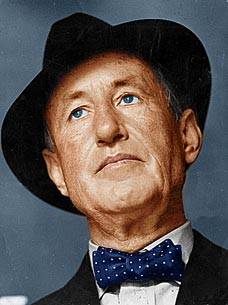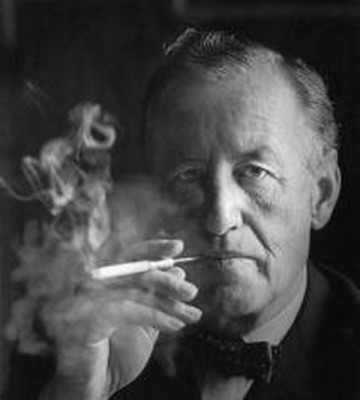 Happy Birthday, Mr. Bond! Ian Fleming’s iconic fictional spy, James Bond, 007, is celebrating an astonishing 0070 years as one of Britain’s greatest cultural creations of the post-1945 period. The very first James Bond thriller, Casino Royale, was published by Jonathan Cape in Britain on April 13th, 1953. Fleming himself had designed the layout for his debut book’s now famous dust-jacket. When he had first sat down at his desk at Goldeneye in Jamaica on February 17th, 1952, little did Fleming realise how popular his creation would become, both in print and on the big screen.
Happy Birthday, Mr. Bond! Ian Fleming’s iconic fictional spy, James Bond, 007, is celebrating an astonishing 0070 years as one of Britain’s greatest cultural creations of the post-1945 period. The very first James Bond thriller, Casino Royale, was published by Jonathan Cape in Britain on April 13th, 1953. Fleming himself had designed the layout for his debut book’s now famous dust-jacket. When he had first sat down at his desk at Goldeneye in Jamaica on February 17th, 1952, little did Fleming realise how popular his creation would become, both in print and on the big screen.
In fact, Fleming was, at first, not even sure his 60,000-word manuscript was publishable, although he hoped that, if it did appear in print, he would at least earn a modest financial return on the book. It had also fulfilled a romantic ambition Fleming had been nursing for a long time: to write a spy book to top all spy books, one which would draw upon some of his own espionage knowledge and experiences gained when he had served in Naval Intelligence during World War Two.
In this ambition, he succeeded beyond all his wildest dreams and, indeed, created a series of secret agent books that caught the imagination of generations of readers, and still does today, seventy years later, helped considerably by the 60 year old EON film franchise. The JBIFC helps celebrate the special birthday.
Who was Ian Fleming?
Ian Lancaster Fleming was born in London on 28th May 1908, the second of four brothers. He was educated at Eton College and then abroad in Germany and Austria. After an early career at Reuters news agency, he became a stockbroker. During World War Two he worked as assistant to the Director of the Naval Intelligence Division (NID) in the Admiralty, London. Fleming’s experiences in this role were arguably the inspiration for many of the characters and incidents that he was to later write about in the James Bond books.
After World War Two he became foreign manager, in charge of foreign correspondents, for Kemsley newspapers, owners of the Sunday Times amongst other newspapers. It was not until 1952, when, at the age of 43, that he settled down in his Jamaican home, and produced – in not much more than two months – Casino Royale, the first James Bond adventure. A further thirteen James Bond titles would follow, and Fleming lived long enough to begin to witness their enormous success. He also saw his character played by Sean Connery in the first two EON James Bond films, Dr. No and From Russia, With Love. He was also able to visit the set of Goldfinger, but sadly passed away before the film’s premiere.
Fleming married Anne Rothermere in 1952 and in August that year his only son, Caspar, was born. While convalescing from his first heart attack in 1962, he wrote a short story about a flying car for Caspar – Chitty Chitty Bang Bang. He was also a highly accomplished journalist, with a real thirst for stories about the exotic, mysterious and unusual. He loved travel and visiting capitals across the globe, and had a fascination with hi-tech gadgets and new inventions of all kinds.
Tragically, Ian Fleming died, aged just 56, on August 12th, 1964, at Sandwich in Kent.
The James Bond Adventures – A Quick Guide
1 Casino Royale (1953)
2 Live And Let Die (1954)
3 Moonraker (1955)
4 Diamonds Are Forever (1956)
5 From Russia, With Love (1957)
6 Dr. No (1958)
7 Goldfinger (1959)
8 For Your Eyes Only – Five secret occasions in the life of James Bond (1960):
i From A View To A Kill
ii For Your Eyes Only
iii Quantum of Solace
iv Risico
v The Hildebrand Rarity
9 Thunderball (1961)
10 The Spy Who Loved Me (1962)
11 On Her Majesty’s Secret Service (1963)
12 You Only Live Twice (1964)
13 The Man With The Golden Gun (1965)
14 Octopussy and The Living Daylights (1966)
Note: The Property of a Lady (a story
commissioned by the auction house
Sothebys) also appears in paperback
editions of this book.
Ian Fleming on his creation
On what influenced his 007 stories: ‘Although he is almost entirely a product of my imagination, I used various people I came across during the war – secret service men, commandos, newspaper men – as a basis for him. My experiences during the war, and my knowledge of intelligence work led me to write about them in a highly bowdlerized way, and I simply used Bond as the central figure. He just came out of thin air. There he was – a compound of secret agent and commando types I had met’.
On the choice of the name ‘James Bond’, Fleming explained: ‘I wanted the simplest, dullest, plainest-sounding name I could find. Exotic things would happen to and around him but he would be a neutral figure – an anonymous blunt instrument wielded by a Government Department’.
On Bond as a silhouette: ‘The paradox is that I quite deliberately made him rather anonymous. This was to enable the reader to identify with him. People have only to put their own clothes on Bond and build him into whatever sort of person they admire. If you read my books you’ll find that I don’t actually describe him at all’.
On the double-0 prefix: ‘To make Bond’s job more interesting, I hit upon the 00 prefix. I lifted the idea from the Admiralty. At the beginning of the war, all top-secret signals had the double-0 prefix. This was changed subsequently, for security reasons, but it stuck in my mind and I borrowed it for Bond’.
Many happy returns, James. You will live forever.

